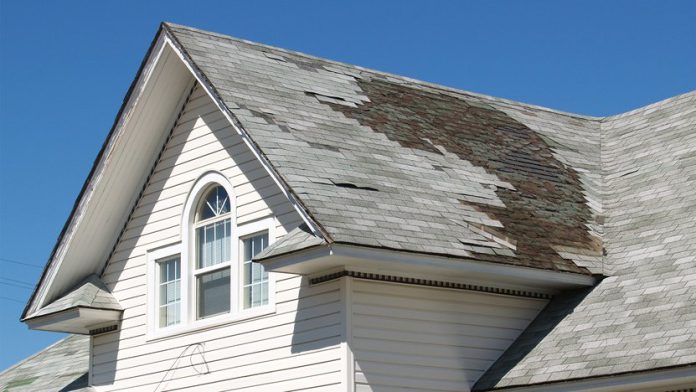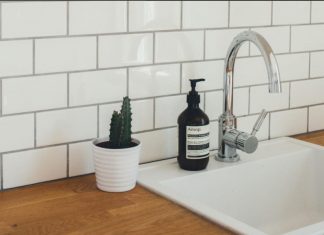Approximately 75% of roofs in the United States currently utilize asphalt shingles. But what occurs when one or more of these shingles sustain damage due to weather or other causes? How can you repair them? We’ll demonstrate four straightforward methods to accomplish this task.
Step 1: Roof Inspection
Conducting a roof inspection is the crucial first step in maintaining a healthy shingle roof. This involves carefully examining the top of your house to detect any potential issues. Ideally, inspections should be performed twice a year to catch problems early before they escalate into costly repairs.
During the inspection, it’s important to focus on the shingles:
- Check for missing shingles and inspect the roof for gaps.
- Examine shingles for curling and address any curled shingles.
- Look for cracks in the shingles to ensure they are intact.
- Inspect the flashing around vents for signs of wear.
- Clean gutters of debris to prevent water buildup and damage.
However, the inspection should extend beyond just the shingles. Assess the flashing around chimneys and vents for wear or damage. Additionally, check gutters for debris, as clogged gutters can lead to water pooling and potential roof damage.
Remember, a thorough roof inspection is akin to a health check for your home. It helps identify and address problems early, keeping the roof strong and reliable while protecting the house below. If you’re unsure where to start, don’t hesitate to contact us at MidSouth Construction, and we’ll conduct a comprehensive roof inspection for you.
Step 2: Gathering Materials and Tools
After completing the roof inspection, the next step is to prepare for the repair by gathering the necessary materials and tools. This careful preparation ensures a smoother and more efficient fixing process. Begin by assembling the required materials, including:
- Replacement shingles
- Roof nails
- Roofing adhesive or putty
Ensure that the replacement shingles match the existing ones in color and style to maintain a uniform appearance. Here’s a checklist for gathering materials and tools for this task:
- Gather replacement shingles to match existing roofing materials.
- Collect roofing nails and a hammer to secure shingles.
- Acquire roofing adhesive or sealant for permanent repairs.
- Use a sturdy ladder for safe access to the roof.
Having all the necessary materials and tools ready allows you to start the repair process and complete the job quickly.
Step 3: Shingle Replacement and Repair Techniques
Replacing and repairing shingles involves several simple yet critical techniques to restore the integrity of the roof. Start by carefully removing damaged shingles using a pry bar or flat shovel, being cautious not to damage the surrounding shingles.
These repair methods aim to maintain the roof’s protective barrier and ensure a waterproof and weather-resistant surface. Properly executing these simple yet effective methods can prolong the life of your roof. Here’s a 5-step process for replacing and repairing shingles:
- Carefully remove damaged shingles with a pry bar.
- Align the new shingles smoothly with the existing ones for uniformity.
- Secure the replacement shingles with roofing nails just below the others.
- Use roofing adhesive to securely reattach curled shingles.
- Repair cracked shingles with waterproof sealant for added durability.
After removing the damaged shingles, place the new ones in the vacant spots, ensuring they align smoothly with the existing ones. Secure the replacement shingles with roofing nails and a hammer, driving the nails just below the top of the shingles to prevent leaks.
However, if you’re too busy or prefer not to handle the technical aspects, don’t hesitate to contact us at MidSouth Construction. We’ll take care of the job for you, relieving you of the worry about these techniques.
Step 4: Preventative Maintenance
Preventive maintenance is the final step to ensure the long-term health of your shingle roof. Regularly check your roof for signs of wear and tear, particularly after extreme weather conditions. Clear debris from gutters to prevent water buildup and potential damage.
Here are some recommended actions:
- Regularly inspect for wear and tear after rain, hail, snow, heat waves, etc.
- Clear clogged gutters to prevent water buildup and potential water damage.
- Trim overhanging branches to minimize the risk of falling debris.
- Apply a coating to the roof to enhance durability and weather resistance.
By taking these proactive measures, homeowners can prolong the life of their roof and reduce the likelihood of major repairs in the future. Contact MidSouth Construction today so we can promptly address any small issues and implement proactive measures to safeguard your roof.
Conclusion
These methods offer effective solutions for addressing shingle problems or repairing damaged ones. Now, you can skip the hassle of DIY and entrust our experts at MidSouth Construction to handle it for you. Simply give us a call, and we’ll take care of everything on your behalf.














